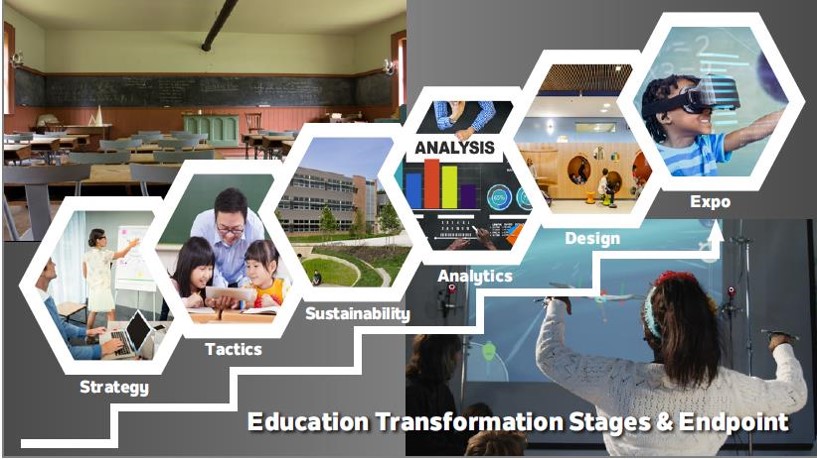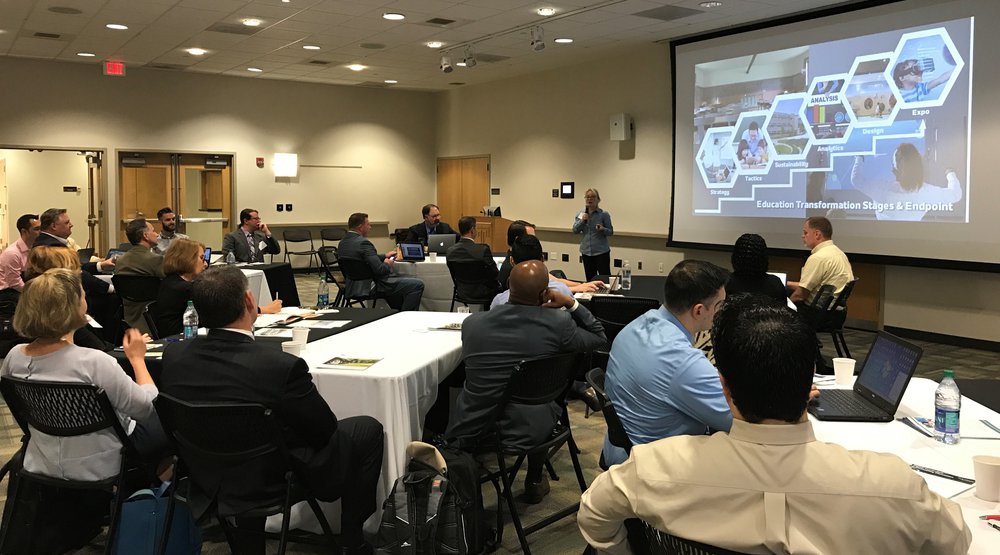Philadelphia area educators met at Temple University in late April for the annual Philadelphia Digital Curriculum Discussion Event. The day was designed to present innovative approaches to school transformation, successful strategies for a sustainable shift to technology and to spotlight examples of success in integrating digital curriculum. Teams attended from Moorestown Public Schools, School District of Philadelphia, Cherry Hill Public Schools, District of Columbia Public Schools, Baltimore Public Schools, Delaware County Intermediate Unit, Camden City School District, Ridley School District, Wallingford-Swarthmore School District, Boyertown Area School District and Chester County Intermediate Unit.
“Sustaining efforts to change how education ‘is’ has been a complex endeavor. Law, policy, procedure, pedagogy and habit are in review,” stated Dr. David Kafitz, VP of School Relations for the Learning Counsel. “We know that you in this room are at some point of the ‘review’ step right this minute and that is probably why you’re here today.”
Dr. Kafitz further presented that the case for change and sustainability lies in the drive to evolve education for the individual kids we serve. “The market has realized that parents care about what their kids learn and thus companies in the education space have pivoted to consumerize their product to sell directly to them,” he stated. “To remain relevant and shift with technology in a sustainable fashion—in the eye of so much change—is what we will be talking about today.”
With that the day began with a keynote from the CEO and Publisher of the Learning Counsel, LeiLani Cauthen. To provide context to the broad picture of the transformation that education is going through, she shared the education transformation continuum and outlined each step we’ve taken, and the coming steps all must take.
“The sustainability conversation is going to go deep in the next few years. Schools will run into all kinds of archaic legislation, competition from consumerization, faulty funding lines, and old policies that will have to be overturned,” LeiLani stated. “Some of this has already gone on, but the bulk of the market is coming into the eye of the sustainability storm now in 2017. It feels like a bottleneck, great moment of angst, and flurry of activity all in one—for both educators and the industry that supports it.”
Photo Gallery of the Day’s Activities and Speakers
During the day’s talks, Mr. David Tirado, the Director of IT Services for Delaware County Intermediate Unit—a regional administration center who’s duties include support to schools in their shift to innovation and technology—shared the value he finds in events such as this. “One of the things that we facilitate is monthly meetings with districts and tech directors in schools to discuss current operations, challenges and successes,” he stated. “From my position, I have to have bull-pen on what’s available, what is working, what is effective. For this reason I have to talk with vendors and hear from them. They give us knowledge to make decisions, whether we like ‘sales pitches’ or not. For example, today, I learned something about ClassLink that I didn’t know before. Obviously, they’re here to sell but it was information that I’m going to take with me. I’m also learning about the T-Mobile grant that, perhaps, our schools know about or not, but that they should do something about. Also HMH’s offers and services.”
He explained that at school and district administration level they get so much information coming in that there is virtually no way to sift to know what is valuable. “You have to have these events. With this I can properly advise my districts about the best opportunities.”
Presentations and executive exercises continued throughout the day, following a 12-page event workbook which contains key research on the shifts taking place across the country.
A team from DC Public Schools presented their blended learning model and how they are supporting all instructors with a central repository of digital curriculum options which can be individually tailored based on the needs of teachers and students. They also shared how they are working with teachers to move them from the “sage-on-the-stage” model to the teacher as a facilitator. Mr. Dewayne McClary, Director of Educational Technology for DC Public Schools spoke about how they are focused on student choice and letting the learners take charge of their own learning. “We are focused on helping our students produce their own artifacts of learning,” he said. “In some instances, the students are doing more of the instruction. It is centered around the ‘4C’s’ of curate, collaborate, create and communicate, which we want every student to be able to do.“
During the end of day leadership panel discussion, Mr. Jim Fazzino, Supervisor of eLearning, Baltimore County Public Schools, and member of the Cecil County Public School Board, shared what they have been doing to keep the purpose in mind when making shifts to technology. “We learned that you have to question yourself on what you’re really trying to do. What’s the big picture? – the whole system and long term view – making sure that folks understand that we don’t want to get wrapped-up in the ‘shiny new toy syndrome’.” He made a point that all in the room nodded in agreement too, “As the market continues to expand we all could get drawn-in, like at a conference, with all the options and opportunities,” he stated. “You have to ask, ‘How are we going to leverage the technology to help us get where we want to be for the students we serve?’ and ‘Is the juice really worth the squeeze?’.”
“One of the things that I always think about is ‘How this is going to affect instruction in the classroom?’ ‘How do we make it understandable and okay to know that students are not all at one place at the same time?’ That’s a heavy-lift,” Jim stated. “At Baltimore, we piloted at Elementary and then moved up to Middle and then to High School. In this way we knew, as the children grew into those school years, that’s how shift in technology would work its way up so it’s sustainable. It’s never something that is done all-at-once, it’s something that you’re constantly investing-in. On the flipside, there’s a political piece that comes with that as well because, if you’re asking for funding resources, part of the job is informing people what’s the give and what’s the get. The folks who may not be in education circles are the ones who may be commenting on spending trends and asking ‘What’s the merit behind this?’ These are the people we must inform and answer to, so they see that we are actually working to address each new student each and every day.”











